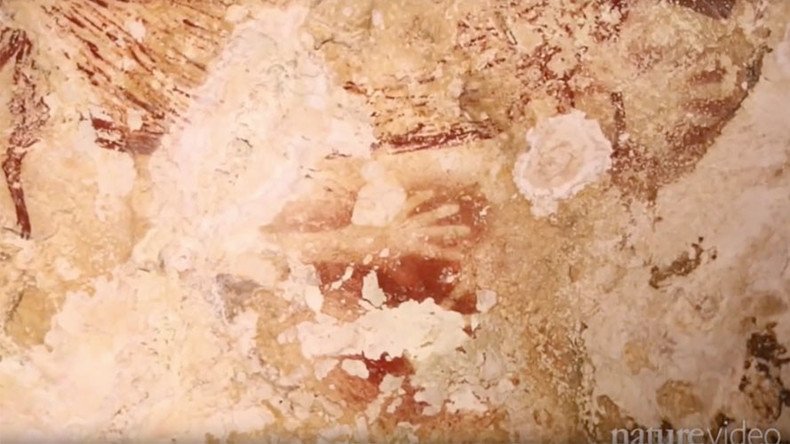Ice age art: 30,000yo jewelry, ornaments discovered on Indonesian island (PHOTO, VIDEO)

Prehistoric ornaments and jewelry as well as evidence of the earliest known cave art have been unveiled in Indonesia. Researchers believe the find may show that “ice age” humans weren’t as culturally underdeveloped as previously thought.
The objects were found by archaeologists digging on the Indonesian island of Sulawesi. Disc-shaped beads made from the teeth of a tusked pig native to the island and pendants made from bone were found at the site alongside tools providing further evidence of cave art production.
All the items date from between 30,000 to 22,000 years ago.
The earliest known cave art on Sulawesi, discovered in 2014, dates from at least 40,000 years ago and it is believed to be the world’s oldest.
In a paper published in the Proceedings of the National Academy of Sciences (PNAS), the team of Indonesian and Australian researchers say these early examples of art and jewelry imply that the spiritual beliefs of modern humans may have transformed as they encountered new forms of animal life on their journey from Asia to Australia.
READ MORE: ‘Treasure of humanity’: 14,000yo cave paintings found under Spanish town (VIDEO)
They speculate that as humans made the journey through Wallacea, a group of islands mainly in Indonesia, they were prompted into new ways of thinking about the natural world because of their encounters with new types of animals and plants.
Researchers present new symbolic artifacts from Pleistocene Indonesia... https://t.co/feQgQVLM3f
— NESPOS Society e.V. (@nespos_society) April 4, 2017
“[E]arly inhabitants of Sulawesi fashioned ornaments from body parts of endemic animals, suggesting modern humans integrated exotic faunas and other novel resources into their symbolic world as they colonized the biogeographically unique regions southeast of continental Eurasia,” the study states.
The researchers say the humans may have carried these beliefs with them when they ventured to Australia, rather than forming them after they reached the continent.
“Elements of the complex human-animal spiritual relationships that define Aboriginal cultures may actually pre-date the initial colonization of Australia,” the team argues in a statement.
READ MORE: Paleolithic price tag: Spain auctions off visits to fragile Altamira cave paintings
Modern humans colonized Australia about 50,000 years ago. They reached the island by boat, crossing from continental Eurasia into Wallacea. One long-held theory argues that the cultural sophistication of these humans declined as they spread into southeast Asia, however the team says their discovery challenges this position.
"Some have argued that [ice age] Pleistocene human culture declined in sophistication as Homo sapiens ventured beyond India into the Southeast Asian tropics,” Associate Professor Adam Brumm, who led the dig, says. “However, the onset of new research programs in Wallacea is steadily dismantling this view."












